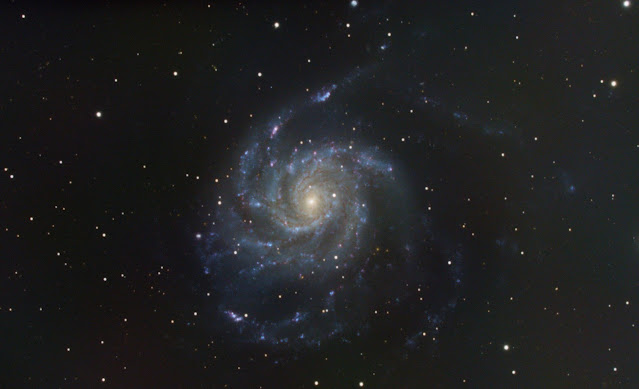I must have caught Max off-guard at the observatory the other day as he promised to send me some of his latest deep sky images... He did good with me and here they are for everyone to appreciate:
The Packman Nebula (NGC 7293) in Ha and Oiii light; 5 minute exposures totaling 12 hours Imaged in October 2022Located in the constellation Aquarius, this object is one of the closest to Earth of all the bright planetary nebulae... approximately 655 ly from Earth and is about 2.5 ly across. (That's roughly half the distance from Earth to out nearest star, Proxima Centauri - Keith)

NGC 7000 North America & Pelican Nebulas, in a 2 panel mosaic, shot in Ha, Sii and Oiii light, using 5 minute exposures totaling 12 hours per panel... 24 hours total. This is between 1500 to 3000 ly from Earth in the constellation Cygnus and is about 140 ly across. Imaged in August & September 2022
Pacman Nebula (NGC 281) in Ha, Sii and Oiii light with 5 minute exposures, totaling 24 hours. This image was taken in October 2022. This nebula is located in the constellation Cassiopeia.
The Wizard Nebula (NGC 7380) was imaged using Ha, Sii and Oiii light with 5 minute exposures and 18+ hours of R G B 2 minute exposures of 1.5 hours. Located in Cepheus, it is about 8500 ly from Earth and about 20 ly long. Imaging was done in August, September & October 2022All of Max's images are photographed from Far Hills, New Jersey at Bortle 6 ~ using an Explore Scientific 102mm ED refractor with 714mm Focal Length, reduced to 586mm. His Camera was a ZWO ASI 2600 Mono with Baader Filters.
This is really amazing work Max. Thank you for sharing... All of you local viewers can go to the NJAA Observatory to see some of this work on display in exhibit-quality prints,
Keith




.jpg)










